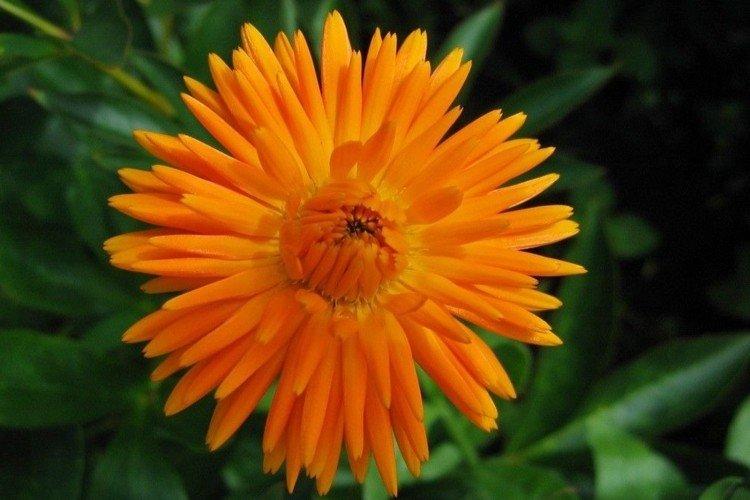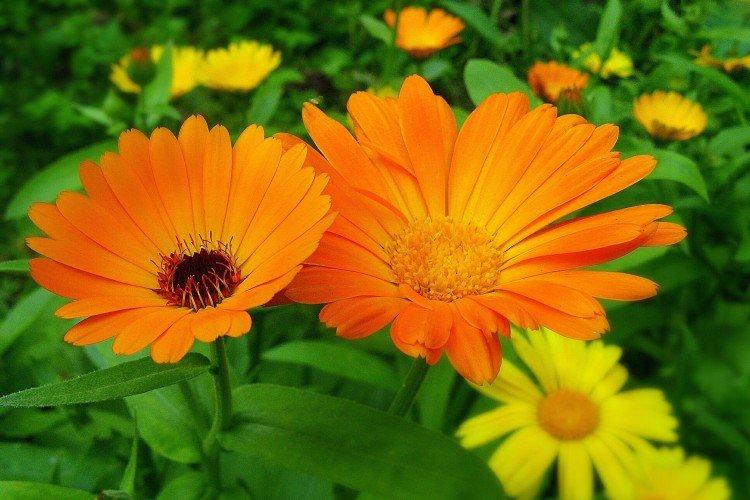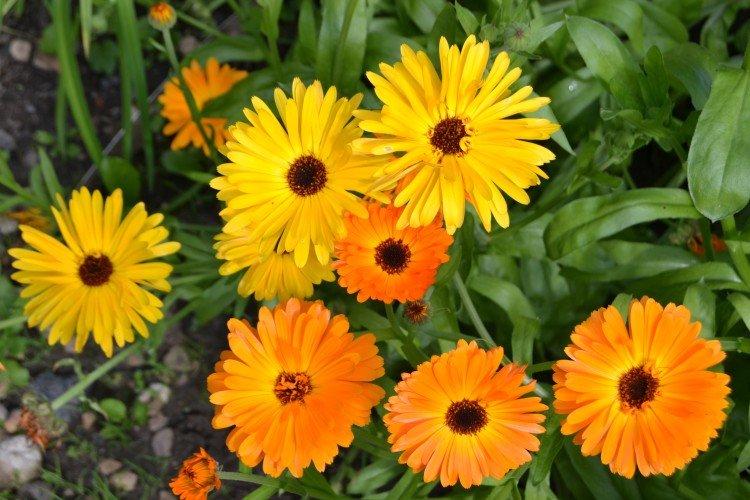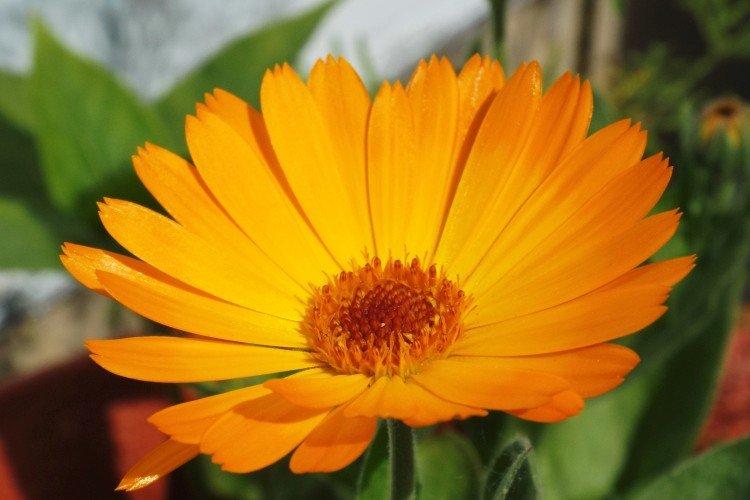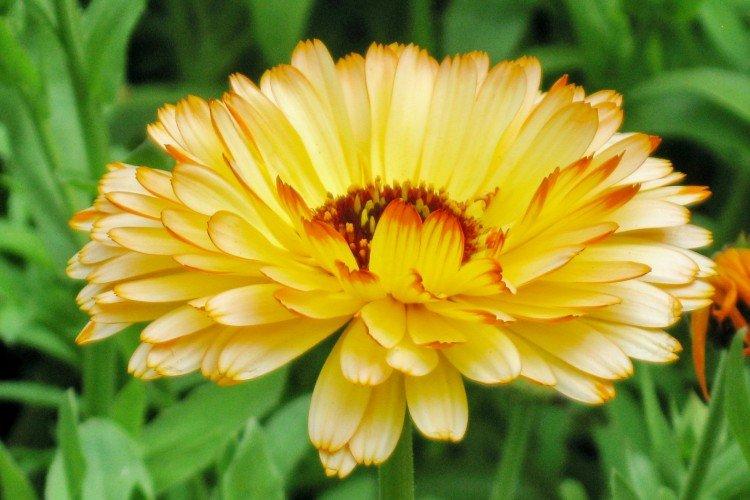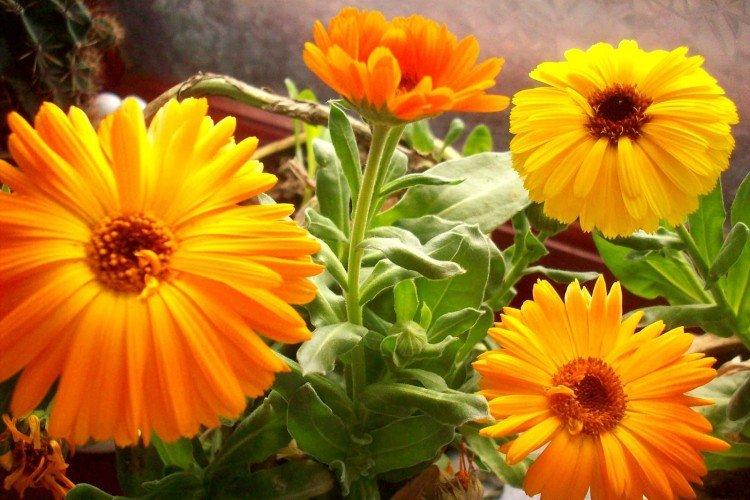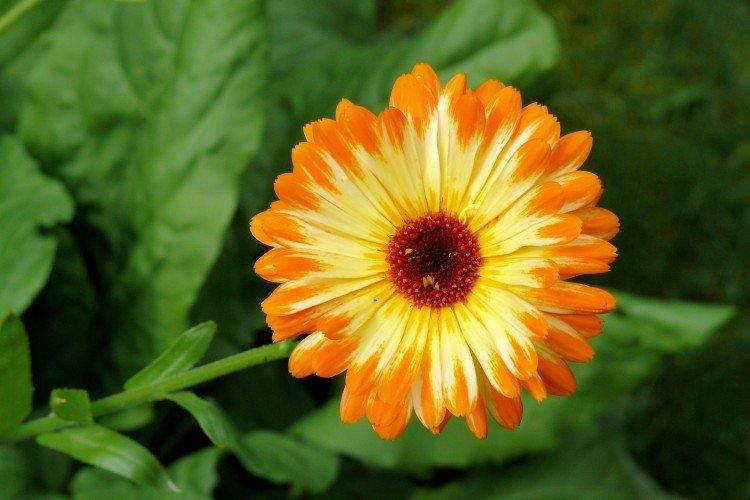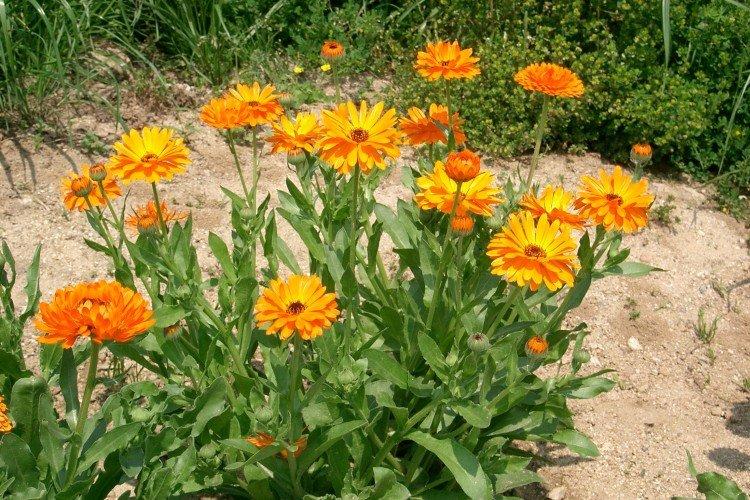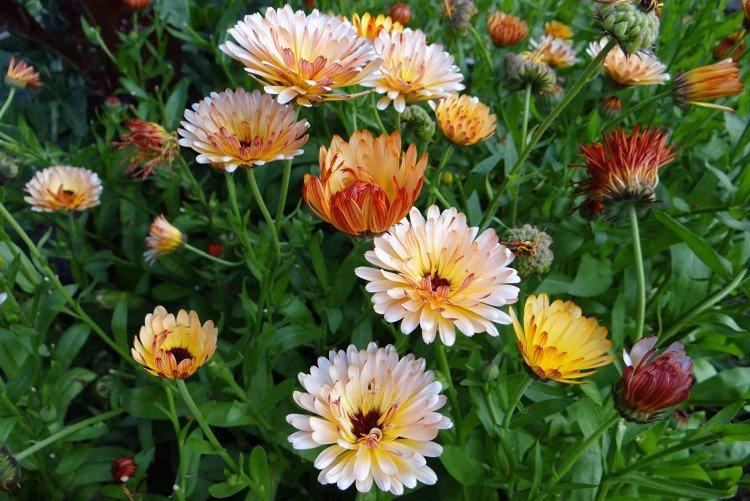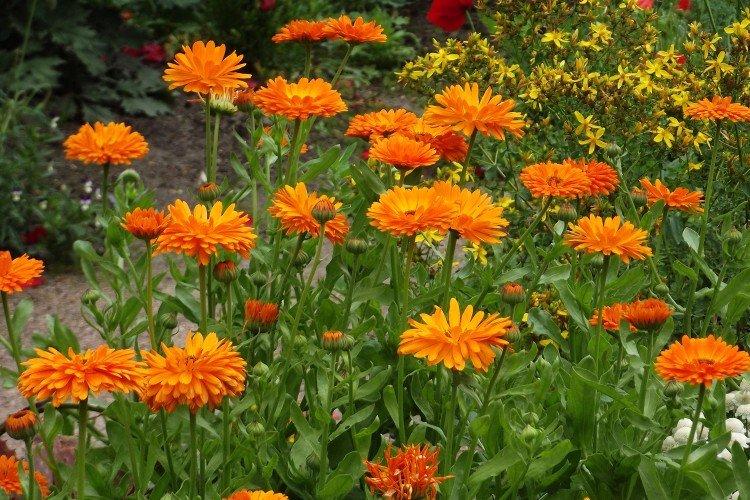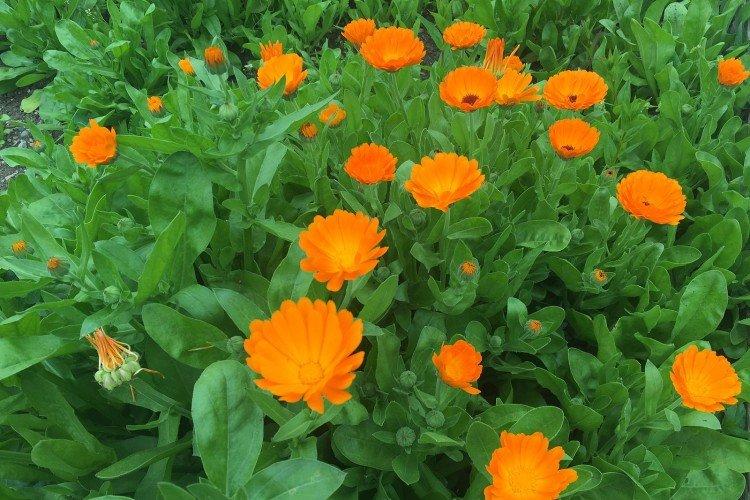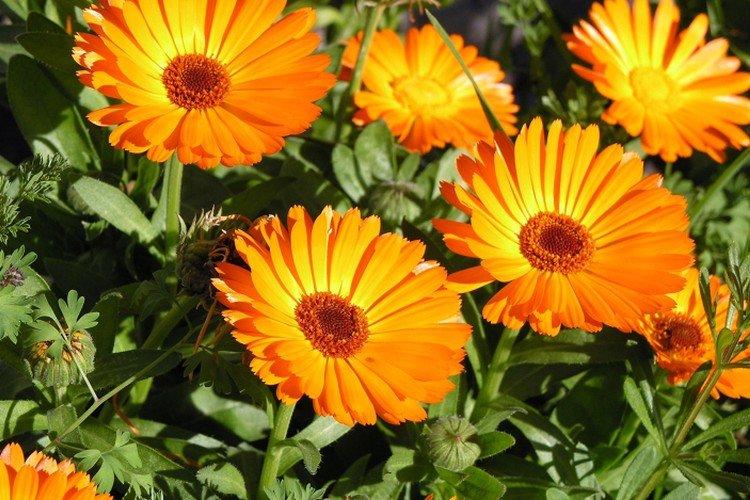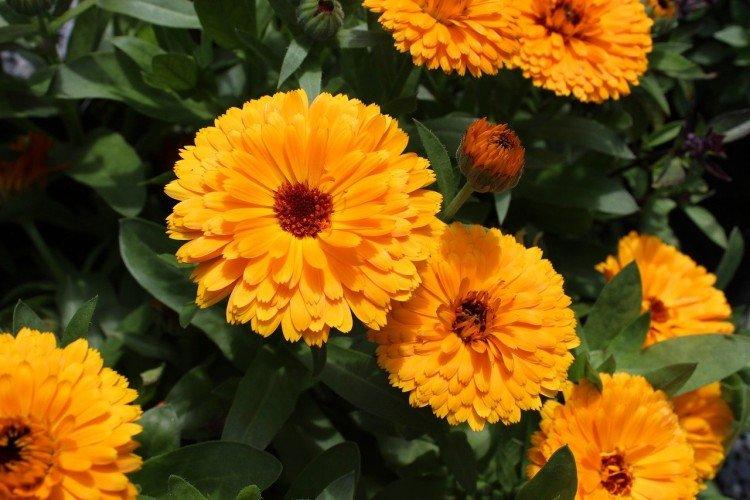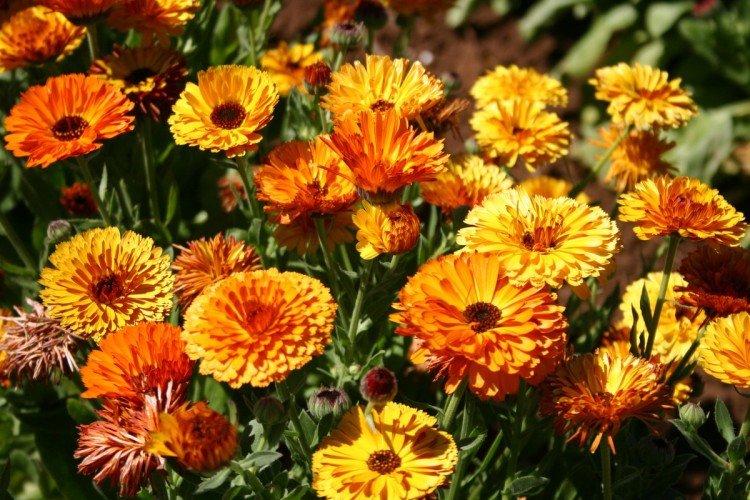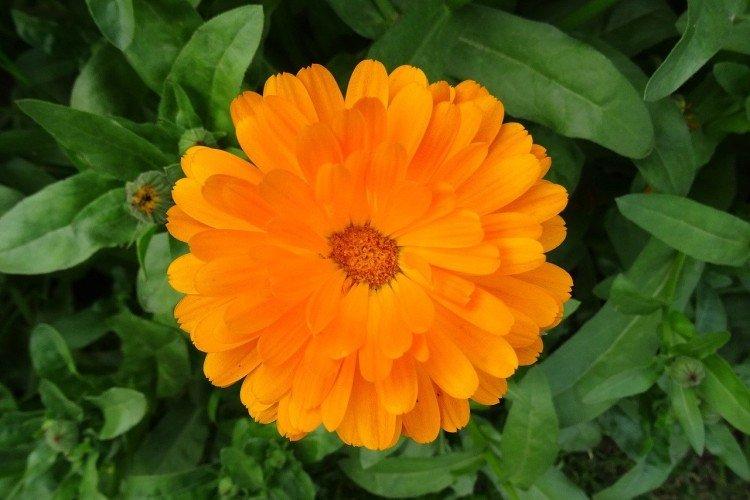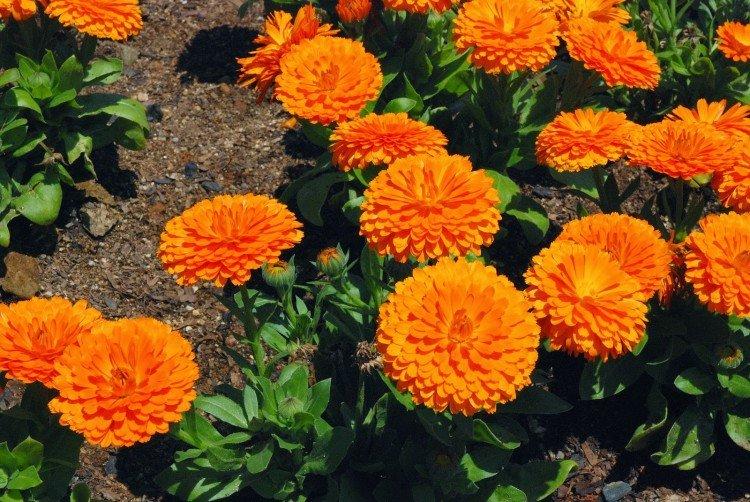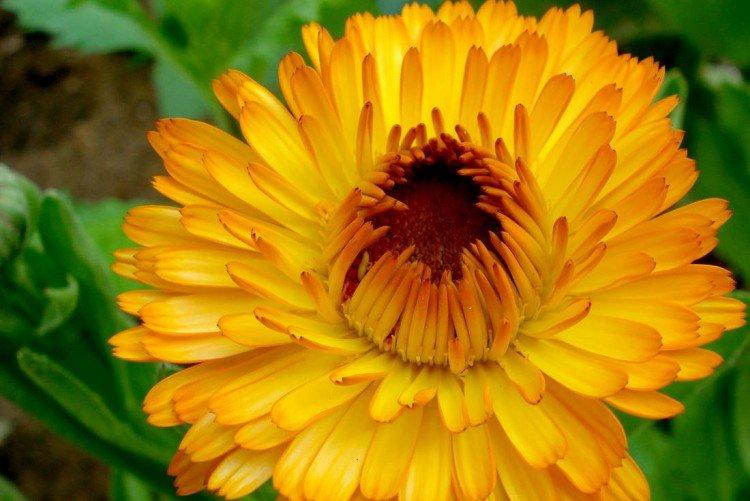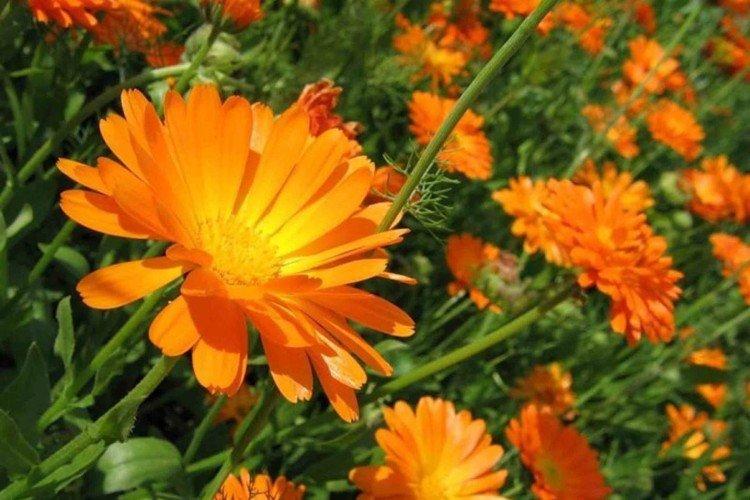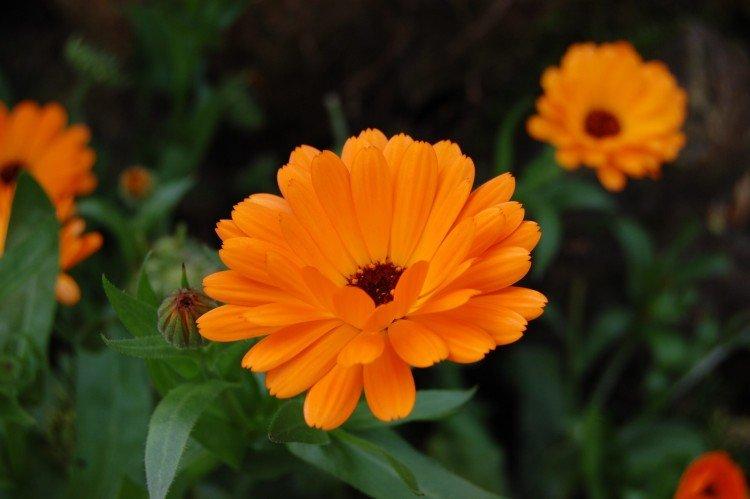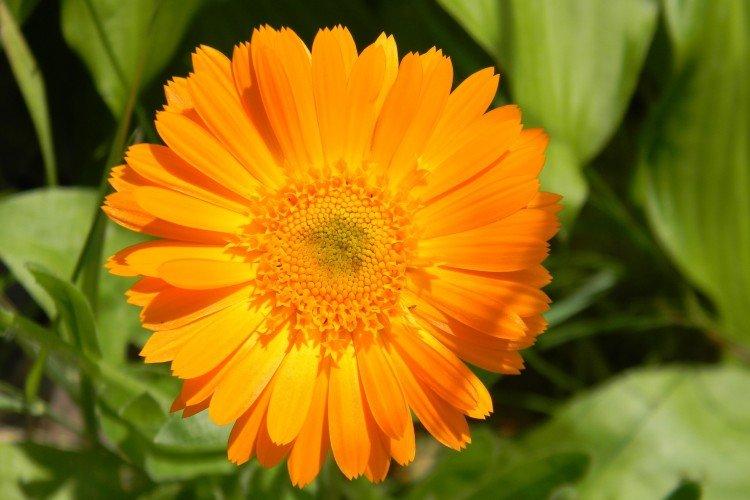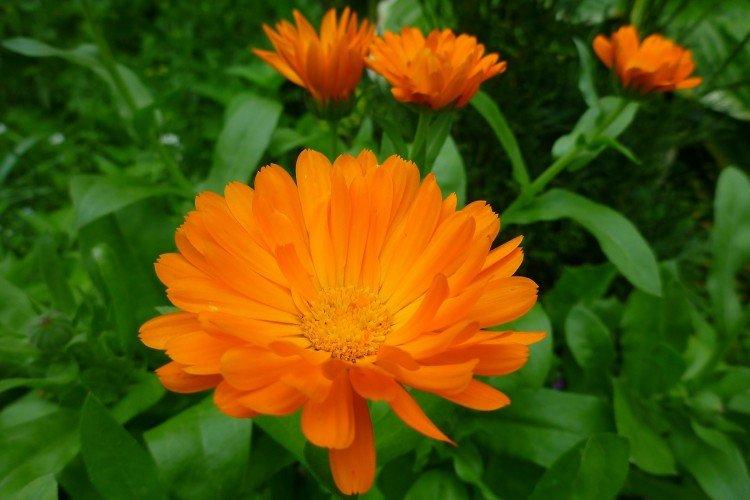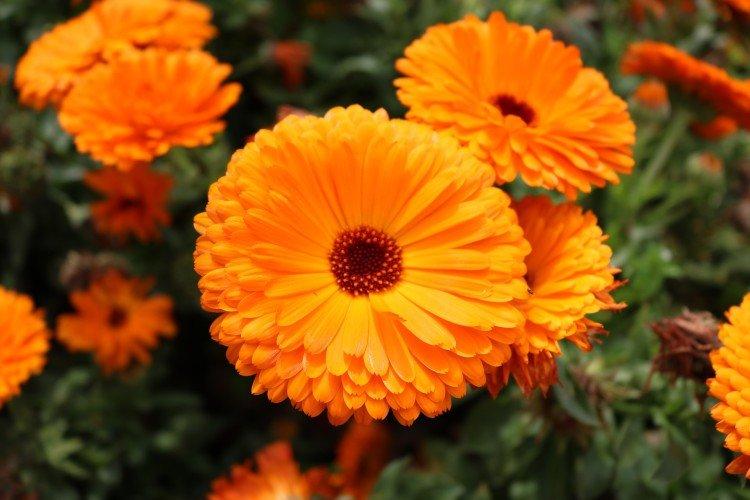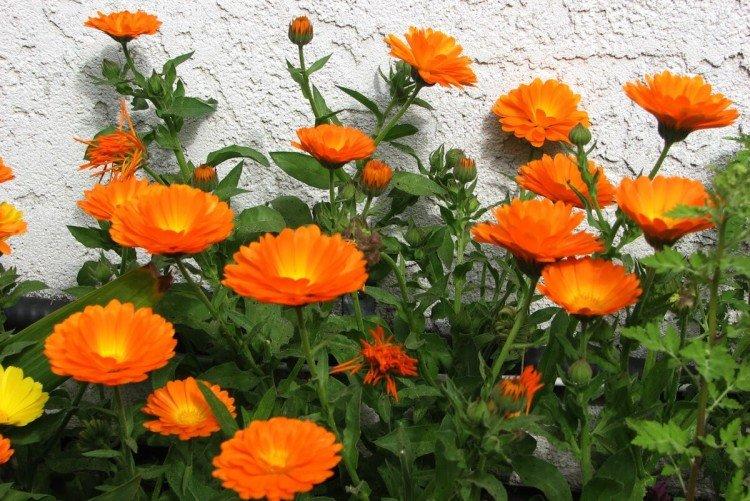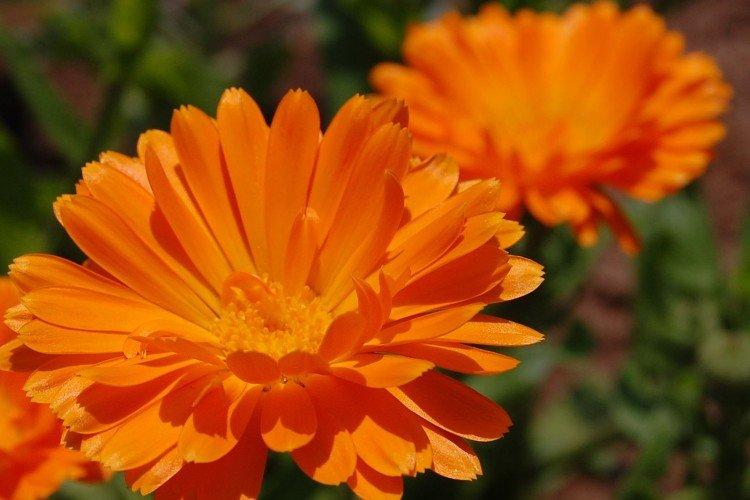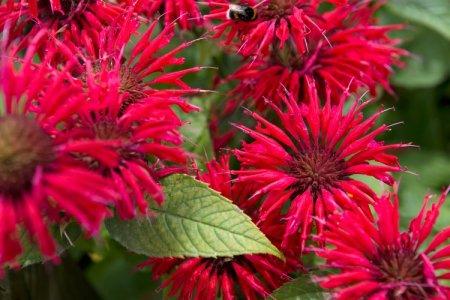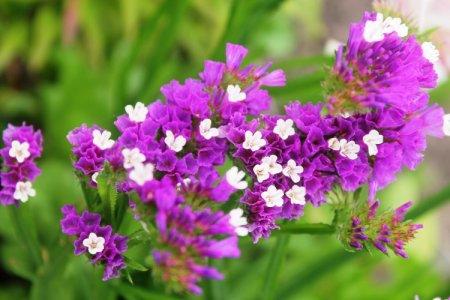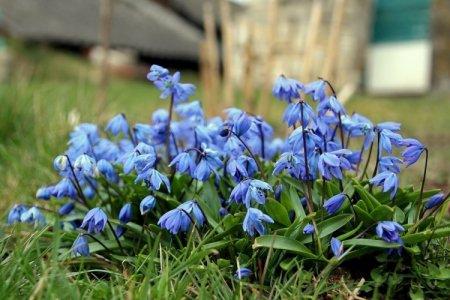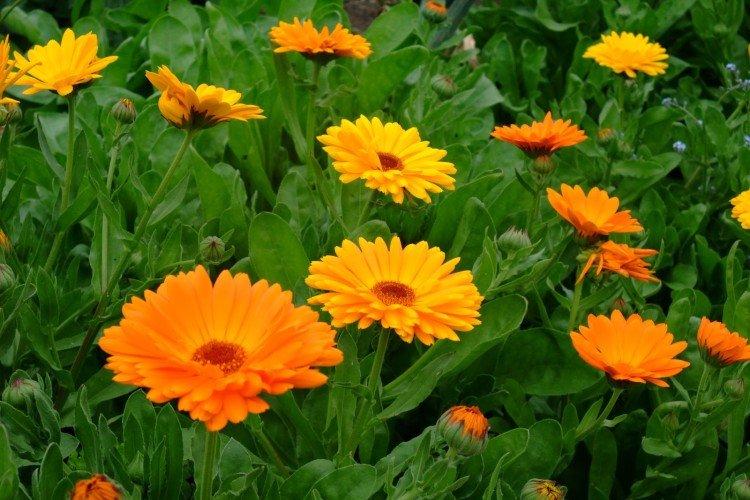
Calendula or marigolds are known as a universal medicinal plant for almost all the troubles of the world. But did you know that this is also an exquisite decorative flower? This is what we want to talk about this time!
general information
Calendula is a very compact and neat member of the Aster family with characteristic inflorescences-baskets. It originally grew in the Mediterranean and parts of Asia, but now it is found all over the world.
Calendula has a developed tap root and a straight stem, which can be branched, depending on the species. Height varies from 15 to 70-80 cm. Shoots are slightly sticky to the touch due to special glandular villi.
Calendula baskets are assembled from flat reed petals of yellow or orange color. Flowering lasts from summer to autumn cold snaps, and throughout the season the plant exudes an expressive aroma.
We can talk about the medicinal properties of calendula for a very long time. It is not for nothing that it is grown by whole plantations, and its extract is actively used even in official medicine. In gardening, however, a beautiful flower is grown in mixborders, carpet plantings, to decorate terraces and balconies, and as a background for flower beds.
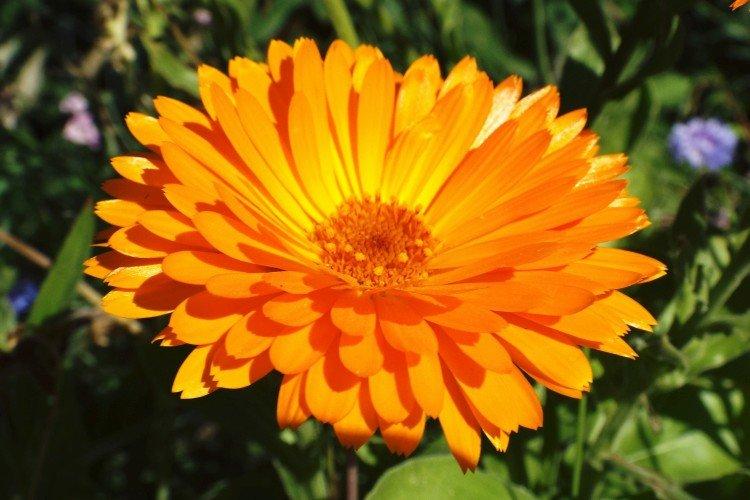
Types of calendula
Of the several dozen species of calendula, only two main ones are grown in gardens. Let's tell you more!
Field calendula
This is a more decorative variety with large, simple inflorescences up to 9 cm in diameter. The bushes themselves are small, 10-30 cm each, and practically do not branch.
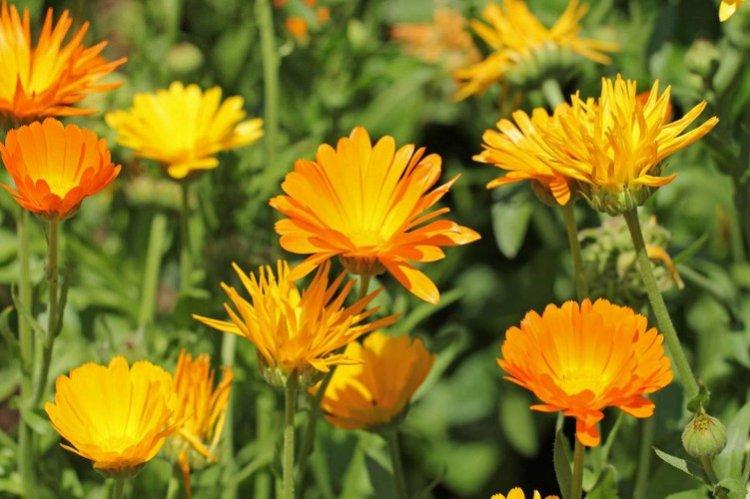
Medicinal calendula
The same species that is still used in medicine. This category is more varied, including double and semi-double varieties. But the diameter of the inflorescences is on average smaller - up to 7-8 cm.But the straight stems are taller - up to 50-75 cm.
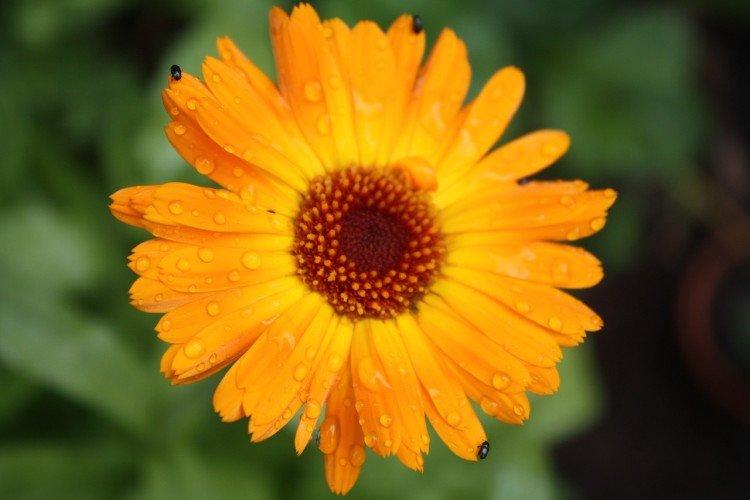
Calendula care
Calendula is grown in the garden as an annual plant, so there are practically no problems with it. You do not need to worry about wintering, and they plant it immediately in open ground.
Temperature and lighting
Calendula is a real sunny flower that loves light and warmth very much. Therefore, choose a well-lit area, and when germinating through seedlings, wait until the May frosts pass before transplanting.
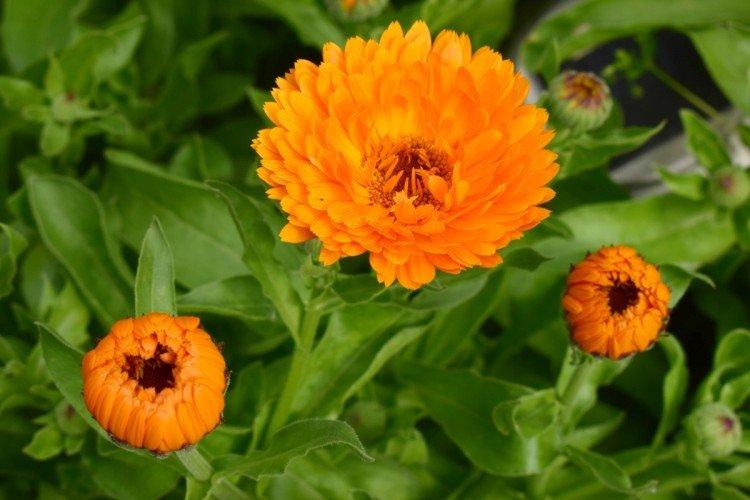
Watering
Young seedlings, which are still gaining strength, need to be carefully watered every other day. Adult plants are rarely watered, but plentifully, mainly on dry hot days.
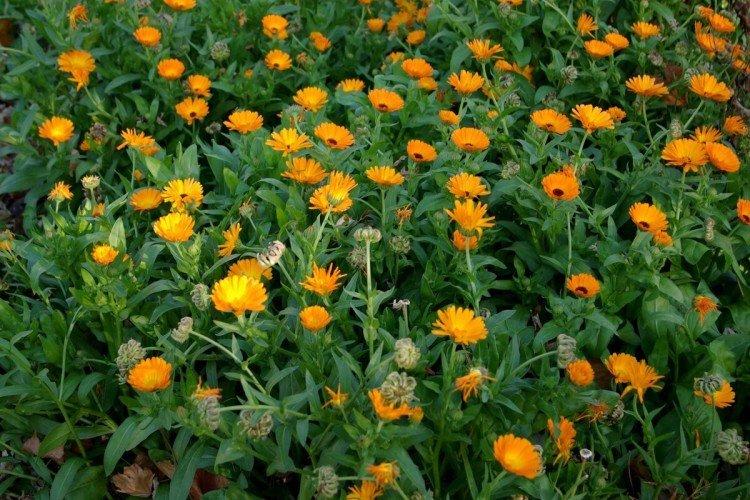
The soil
Calendula requires moderately moist, but always loose and well-drained soil. Nutritional deficiencies can be compensated for with fertilizers. You should not plant calendula in the same area for several years in a row.
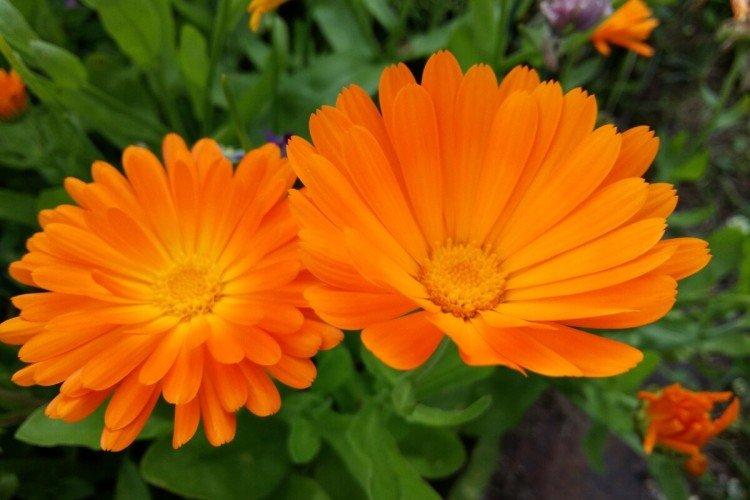
Fertilizers and feeding
Ready-made mineral mixtures are perfect for marigolds. Add them about once a month according to the instructions along with watering - and the flower bed will delight with its beauty.
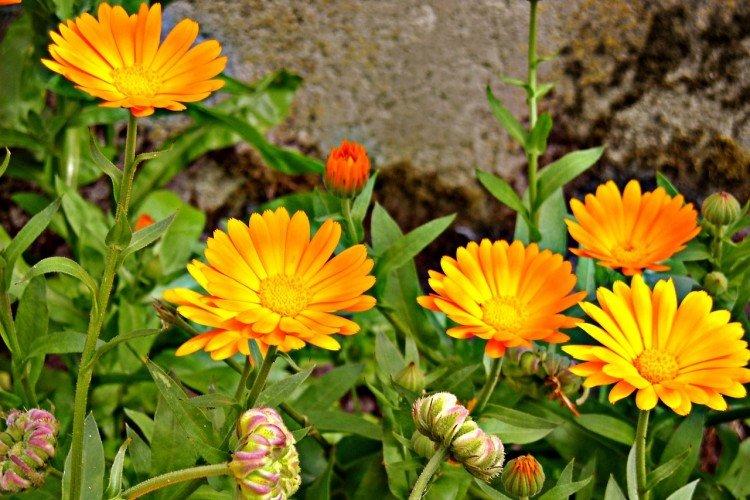
How to prolong the flowering of calendula?
There is one trick, thanks to which the calendula will bloom all season. As soon as all the petals of the basket are fully opened into a flat flower, it must be cut off immediately. And then the plant will have time to form new strong buds.
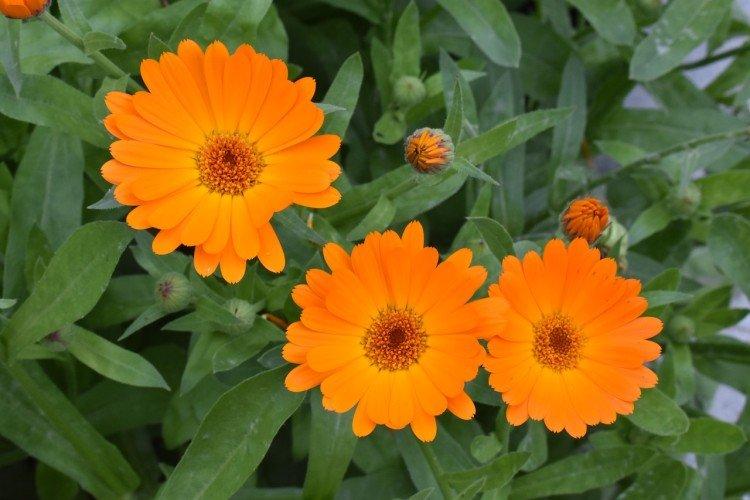
Planting and breeding
The vast majority of garden calendula varieties are annuals, so they are grown from seeds. They are sown directly into open ground, because it is faster and easier than with seedlings. Seedlings are relevant only for certain low-growing ornamental varieties in order to achieve early flowering.
In the garden, calendula is sown before winter in October or already in April. Dig up the area with fertilizers and humus a couple of weeks before planting. The seeds are spread in rows with a distance of about 60 cm between them. Embedding depth - no more than 2 cm.
As the shoots appear, do not forget to thin them out so that at least 25 cm remains between the bushes. But if the calendula is grown only for medicinal purposes, 15 cm is enough. About 2.5 months after germination, the calendula will bloom.
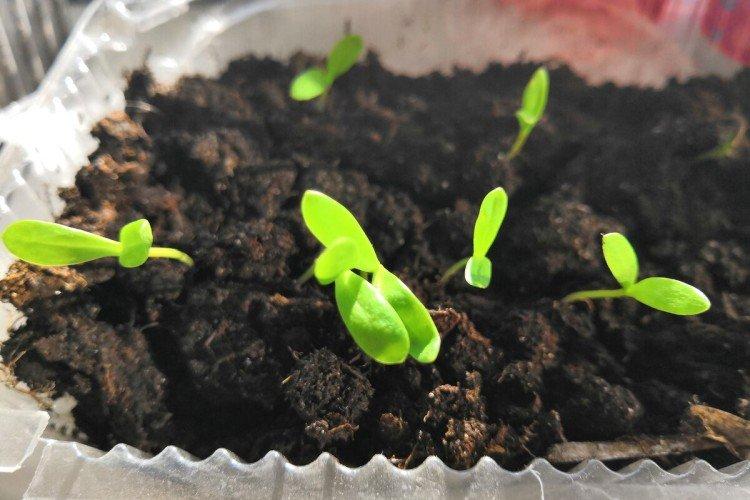
Pest and disease control
Like many aromatic medicinal plants, calendula is almost immune to disease and pest attacks. Only prolonged dampness leads to the appearance of spotting and powdery mildew. But this is an ordinary fungus that can be fought with fungicides.
The only insect that attracts the scent of calendula is aphids. Therefore, we advise you to periodically treat the flower bed with insecticides or homemade infusions for prevention. If the pests have already appeared, but there are still few of them, a soap solution is enough.
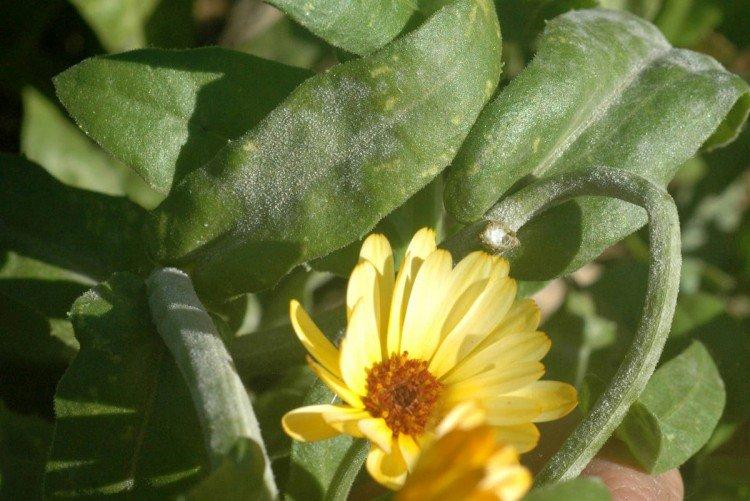
Calendula - photo
You probably already know what a calendula looks like. But her beauty is so often underestimated that we couldn't deny ourselves the pleasure of collecting a large collection of photos!
